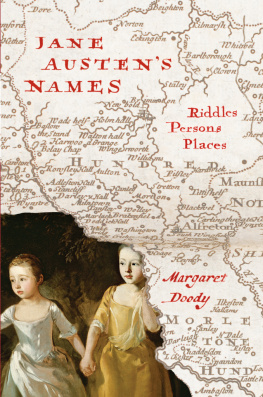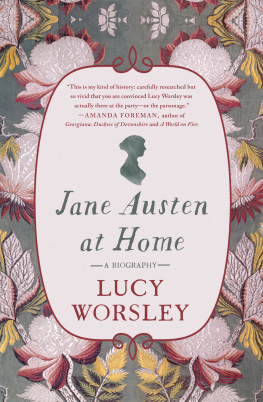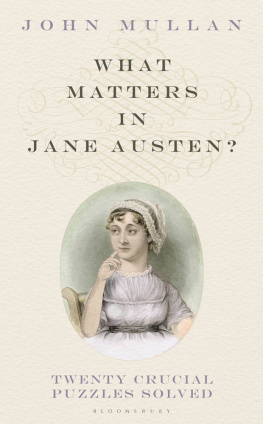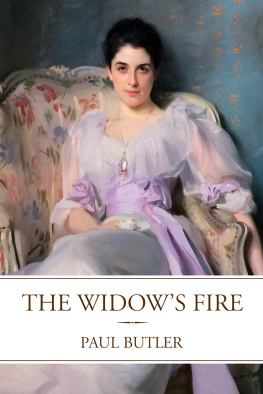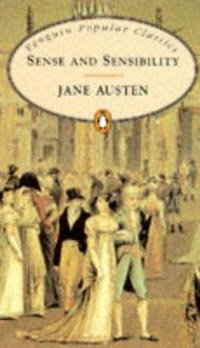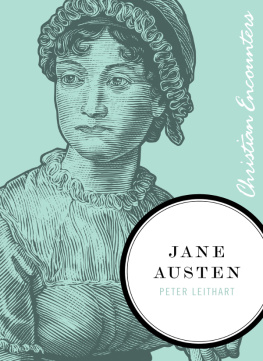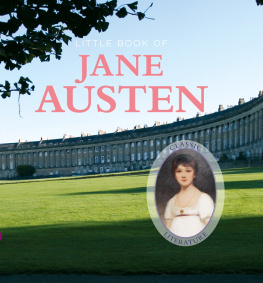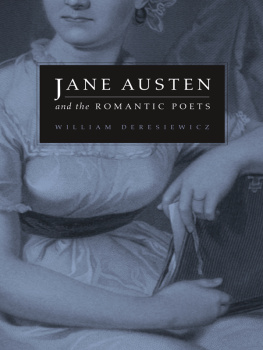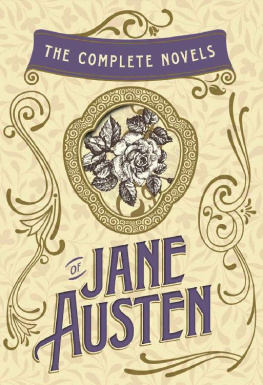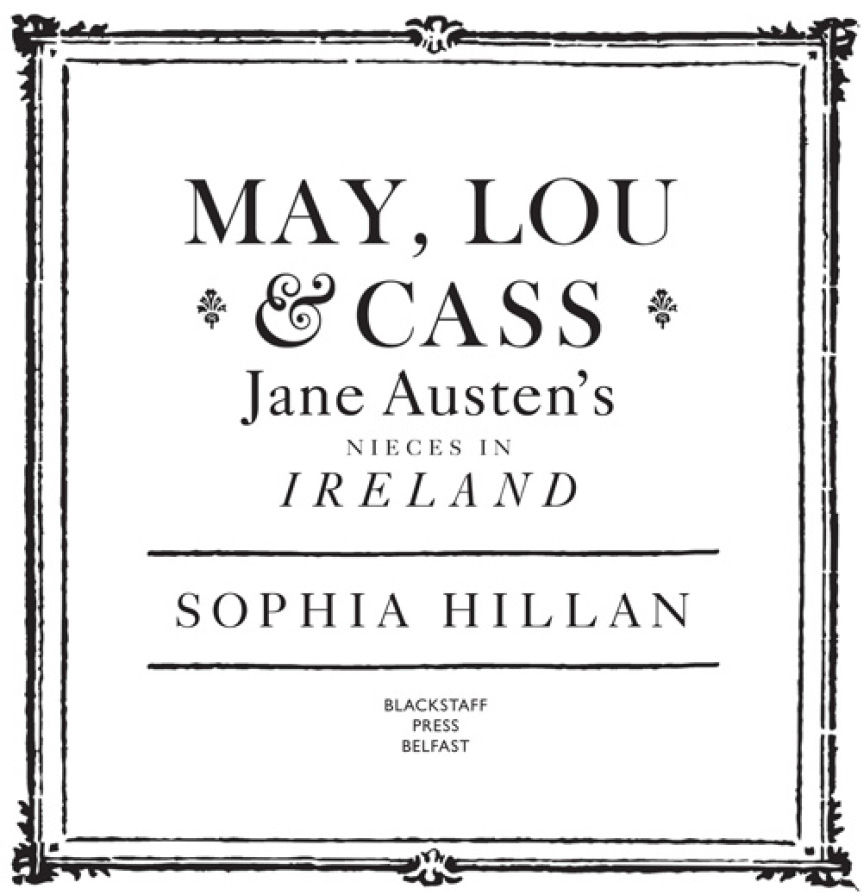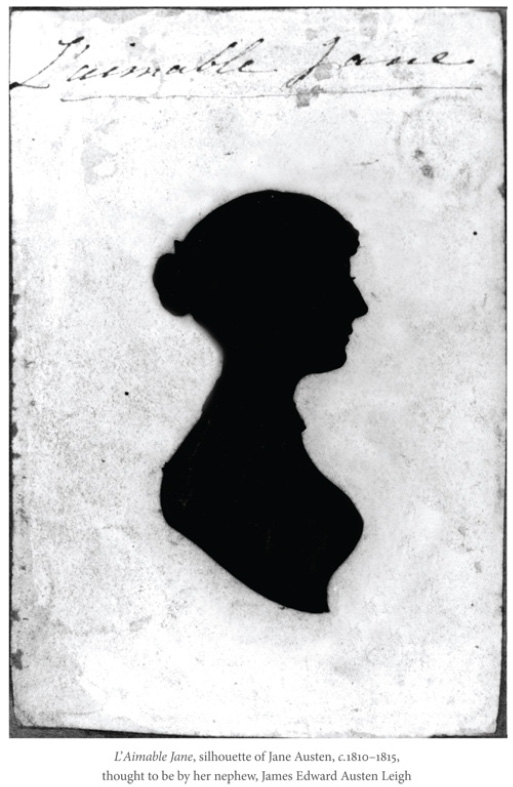... the Manners there
And we think you had better not leave England. Let the Portmans go to Ireland, but as you know nothing of the Manners there, you had better not go with them. You will be in danger of giving false misrepresentations.
Acknowledgements
Over the five years in which this book has been in the making, I have had the expert assistance of a number of people, and to all of these I am indeed grateful. Patsy Horton, Managing Editor of Blackstaff Press, saw the potential in the project at an early stage and, despite the fragile economic climate affecting us all, championed it and saw it through to the end. To Patsy and to her colleagues, Julie Steenson, who copy-edited the book with style and grace, Helen Wright and Michelle Griffin, who worked with me on the illustrations with great understanding of the subject and Simon Coury, who read the proofs, special thanks are due.
The staff of Jane Austens House Museum in Chawton, Hampshire could not have done more for me: Tom Carpenter, Louise West and Ann Channon made me welcome from the outset and gave me unlimited access not only to research facilities, but also to rare manuscripts and early editions. I was given the privilege of working with them, and with Isabel Snowden, among the personal possessions of Jane Austen and her family in the house where she lived and wrote most of her finest work: to do so has been one of the greatest pleasures of the last five years.
A short walk from the Jane Austen House, at the former home of her brother Edward Knight, once Chawton Great House, now Chawton House Library, I was most kindly permitted to consult unique editions, and was shown the room where family legend has it that Jane Austen sat and looked out over the grounds. Having stood there, I do not doubt it. I thank the Librarian, Jacqui Grainger, for showing it to me, and for all her kind assistance. Thanks are also due to the staff of the Hampshire Record Office in Winchester, where so many of Marianne Knights letters, and the papers of Montagu Knight and James Edward Austen Leigh are kept. I am especially grateful to Nicola Pink, who helped enormously with finding rare images of members of the family and their homes.
The Knight sisters spent most of their childhood at Godmersham in Kent: I owe a great debt of thanks to the staff of the Centre for Kentish Studies at Maidstone, Julie Gregson and her colleagues. I was given invaluable and painstaking assistance by two people in particular: Helen Orme and Mark Ballard, to whom I am indebted for helping me so consistently and patiently through the Knatchbull and Rice archives. Though I did not meet Margaret Hammond, whose earlier work on the Rice archive proved very helpful to me, I am most grateful to her. I am sorry that the sudden death of Henry Rice, who most kindly answered my queries, means I cannot thank him: I do thank Mrs Rice, his widow, for the help that she gave in his stead. In Kent, too, I was privileged to meet Margaret Wilson, whose meticulous work on the life, letters and diaries of Fanny Knight (later Lady Knatchbull) has been a boon: I thank Margaret, a most generous scholar, for her careful attention to my many queries, which few but she could have answered.
In Ireland, I carried out most of my work in Belfasts Linen Hall Library, founded when Jane Austen was not yet thirteen years old. For all the assistance and support I have been given by the Librarian, John Killen, and his kind and most helpful colleagues, I am very grateful. The Public Record Office of Northern Ireland holds papers of the Downshire, Ward and Saunderson families: access to these was essential, and I thank the staff for all their help. In particular, I am also very grateful to the former Deputy Keeper of PRONI, A.P.W. Malcomson, who directed me very early in my research towards a key document in the Granard Papers. The staff of both the National Archives and the National Library in Dublin answered my queries quickly and fully: I owe special thanks to the Duty Archivist in the Department of Manuscripts of the National Library of Ireland, Avice-Claire McGovern, who helped me find Lord George Hills copy of Brian Merrimans Gaelic epic, The Midnight Court. My thanks are also due to Michelle Ashmore, Picture Library Executive of the National Museums Northern Ireland at Cultra, Holywood, who gave me access to photographs by James Glass of nineteenth-century Donegal. I had first seen these reproduced in a study of Irish photography by my former colleague at Queens Universitys Institute of Irish Studies, W.A. Maguire. I am indeed sorry that Bills recent passing means I cannot now thank him as I would have wished. I thank, instead, his widow Joan, my former colleague at the Institute of Irish Studies. I can and do thank my former Director at the Institute of Irish Studies, R.H. Buchanan, not only for introducing me to the work of E. Estyn Evans, founder of the Institute and editor of the only modern edition of Lord Georges Facts from Gweedore , but also for identifying for me the location of Isle OValla, where Jane Austens great-niece lived in County Down. I am also grateful to Ronnies wife, Rhoma, who photographed the house; to his successor at the Institute, my colleague Brian Walker, who kindly read the manuscript and gave me guidance on points of Irish history; and to Lord and Lady Dunleath for granting permission to use extracts from Ballywalter Park (1985), and for providing me with the images of Somerset and Norah Ward. In Donegal, I was greatly assisted by the Archivist of the Donegal County Archives in Lifford, Niamh Brennan, who gave me access to the first Gweedore Hotel Book. Patricia Doherty, proprietor of An Chirt, the Gweedore Court Hotel and Heritage Centre, kindly allowed me to consult the second Gweedore Hotel Book, wonderfully discovered during her renovations of the old hotel, once Lord George Hills pride and joy. Susan McCaffrey of Donegal Ancestry in Ramelton gave me invaluable assistance in finding death certificates for Lord George, his wife and sisters-in-law. Also in Gweedore, I was given generous access to rare texts concerning Lord George and Father James McFadden by Tony McHugh, of Comharchumann Fordartha in Derrybeg, to whom I must also express my gratitude. Concerning Lord George Hill and his work in Donegal, I have been greatly aided by the kindness and generosity of Margaret Bonar in sharing with me evidence uncovered during her own invaluable research. I was introduced to Margaret Bonars scholarship by the present owners of Ballyare, Lord Georges house in Donegal, Roy and Noreen Greenslade, who have most kindly given of their time and unique knowledge of the subject. It is thanks to my friends Anglique Day and her husband Fergus Hanna Bell that I met Roy and Noreen Greenslade. I must also express my gratitude to Anglique not only for the hospitality she and her family have extended to me in Donegal but also, as all scholars of Irish Studies must, for her great work in editing, with Patrick McWilliams, the Ordnance Survey Memoirs of the early 1830s, which give a unique and comprehensive picture of the Donegal Jane Austens nieces knew.


